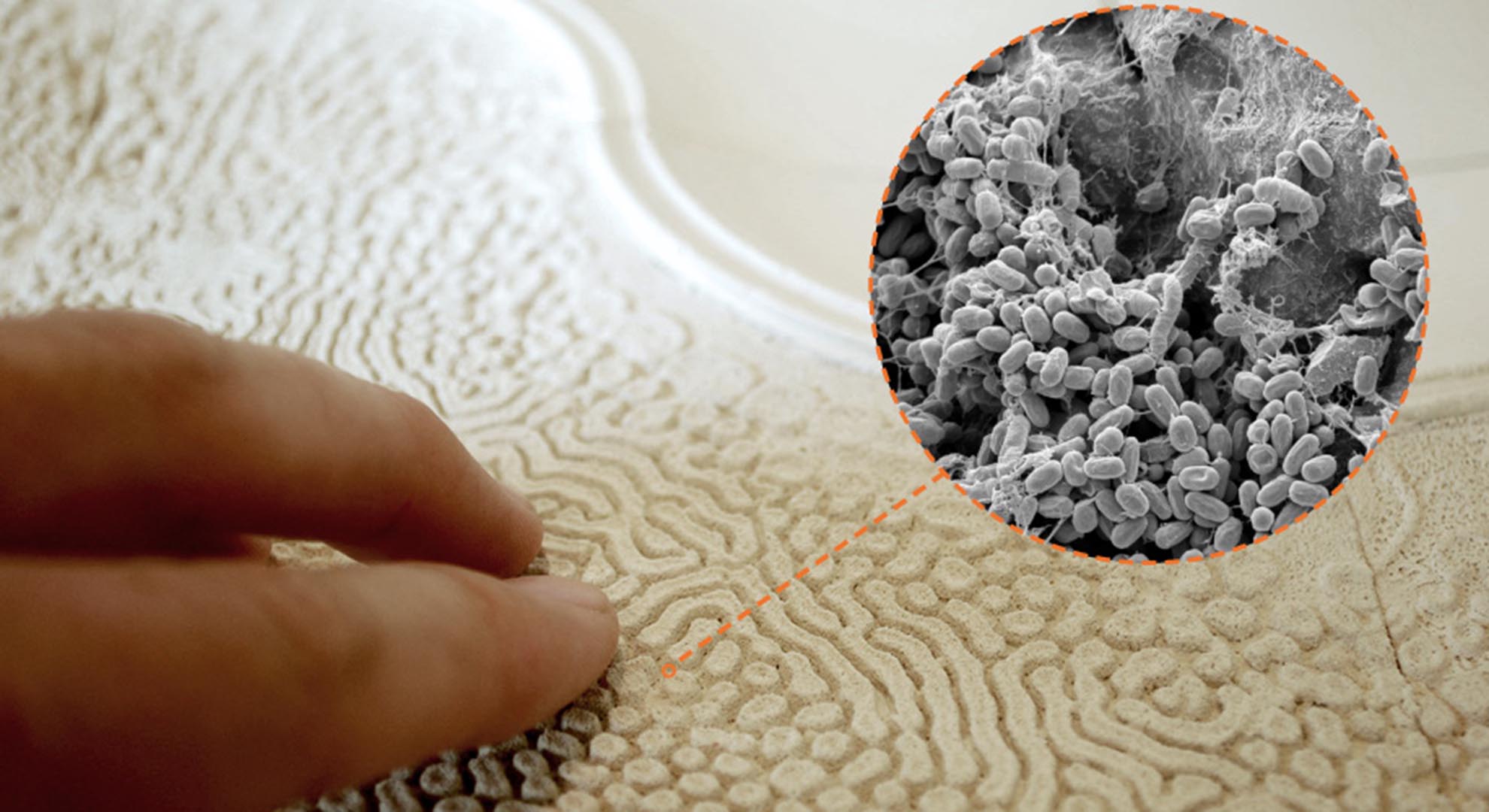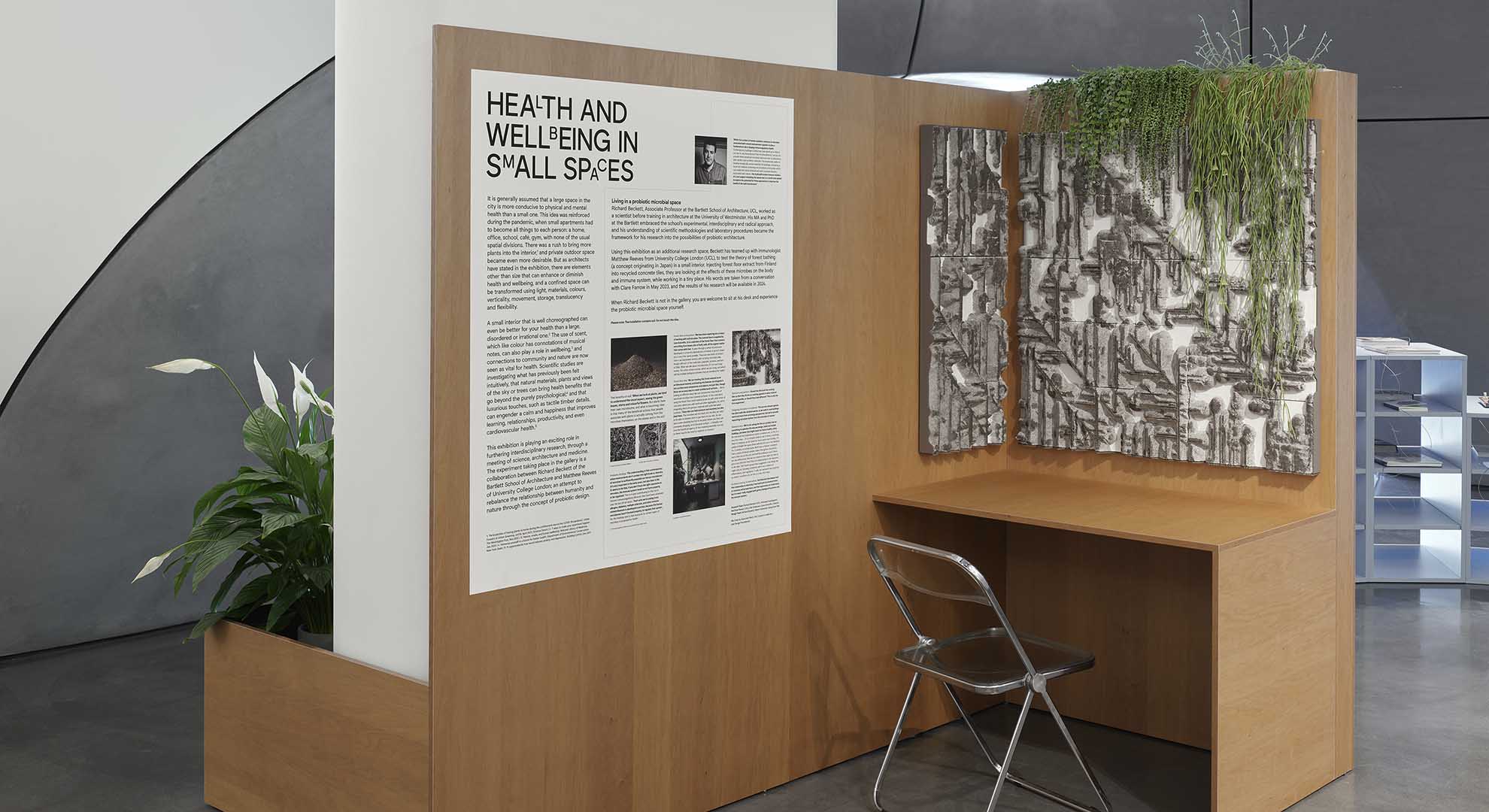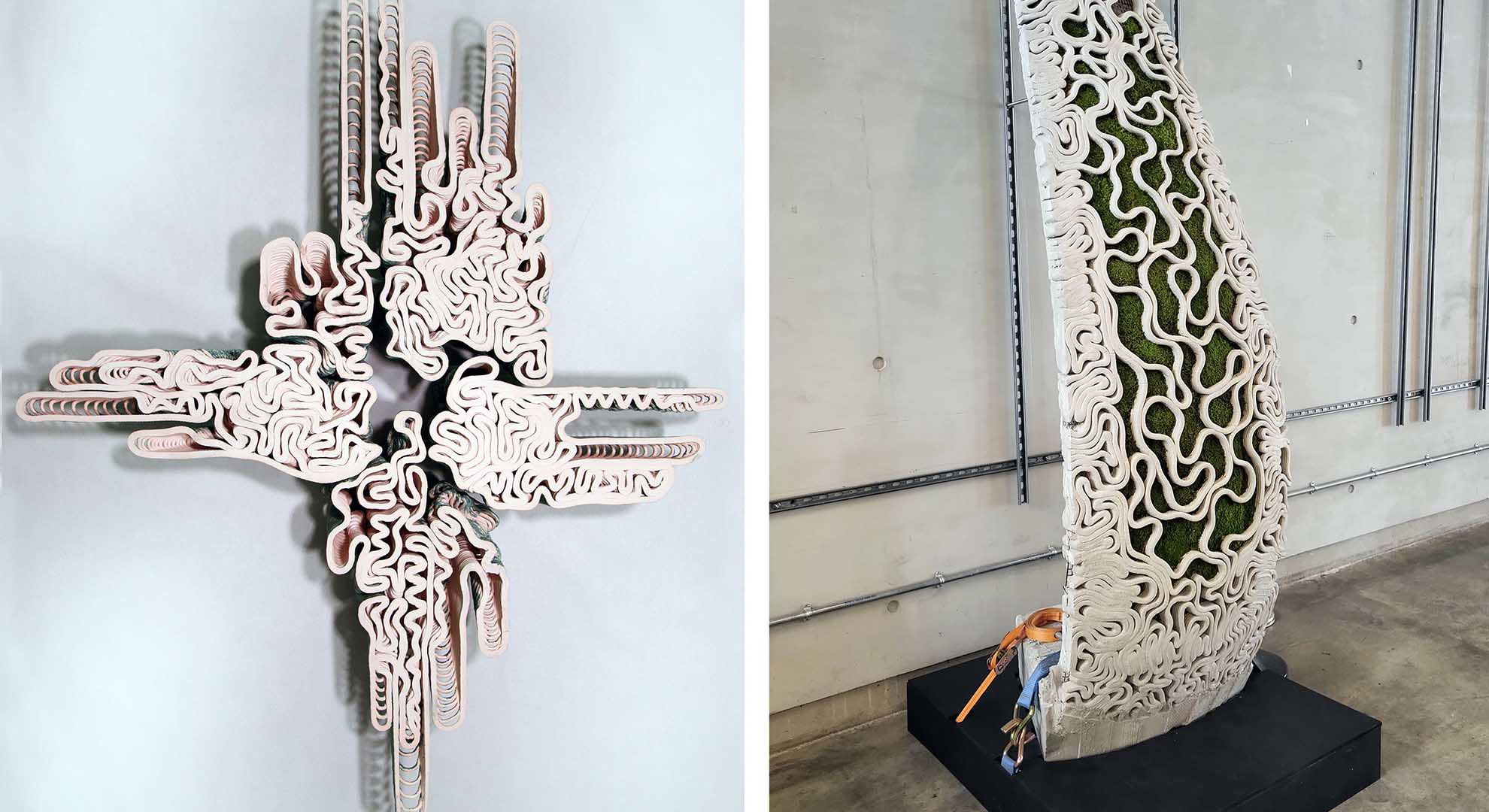Probiotic Architecture
Designing healthy buildings with microbes
Over the last 100 years microbes have been a key challenge for architecture. The threat they pose to health through infectious diseases and the economic challenges they can inflict align with other challenges of the Anthropocene, which are indicating increasingly uncertain futures. Historically, these threats have informed the widely-held assumption that healthy buildings should contain fewer microbes. More recently however, the medical field has revealed a distinction between “good” and “bad” microbes, and have demonstrated how microbes play fundamental roles in shaping human health.
Efforts to remove microbes from buildings have done much good. However, the emergence of new microbial pathologies—the so-called diseases of “missing microbes”—appear to show how a lack of microbes in the buildings and built spaces we inhabit are having detrimental effects on human health. Efforts to create increasingly sterile environments over the last 70 years appear to have gone too far, and are now resulting in the observed increase in chronic, immune related illnesses. These positions suggest that future healthy buildings should continue to protect us from pathogens, but should also provide exposures to beneficial microbes, particularly those associated with nature, which are necessary for human health.

Probiotic materials, NOTBAD: Beckett Lab, UCL
Rather than continuing to pursue design strategies that seek to eradicate and exclude microbes in order to create healthy buildings, probiotic architecture explores a different approach. Operating at the intersection of architecture and microbiology, it explores new design strategies that intentionally incorporate beneficial microbes into the design and systems of buildings. In this way, it explores a shift from antimicrobial design mindsets to that of promicrobial design mindsets to inform healthy buildings by leveraging the beneficial biological activities of microorganisms. These mindsets seek to radically increase microbiodiversity in the built environment as part of a broader recognition of the need to promote multispecies flourishing. The work is exploring these mindsets at a range of scales from the way we conceive of building materials up to the scale of urban planning.
NOTBAD is an ongoing research project which seeks to develop biologically active materials for buildings that have been inoculated with Bacillus subtilis, a benign soil microbe with multiple health benefits. These probiotic materials, which are harmless to humans, were designed into living wall surfaces so that they can inhibit the growth of the AMR (antimicrobal resistance) superbug MRSA (methicillin-resistant Staphylococcus aureus). The research, undertaken in the Beckett Lab at The Bartlett School of Architecture, combines both design and microbiological methodologies. These approaches offer novel solutions to address antimicrobial resistance in buildings, but in ways that do not create unhealthy sterile conditions. Unlike existing antibiotic chemicals, these probiotic approaches target harmful microbes, but still permit other, benign microbes to remain offering other beneficial functions.

”Probiotic Soil Tiles” in the exhibition “Small Spaces in the City: Rethinking Inside the Box,” Roca London Gallery, Richard Beckett, Aileen Hoenerloh, Hangchuan Wei. Photo © Brotherton Lock
Other aspects of the research seeks to develop ways to provide indoor exposures to the kinds of immunoregulatory microorganisms associated with natural environments. This is of particular relevance for use in dense urban areas where outdoor green space and biodiversity are limited. This approach aligns with the biodiversity hypothesis that suggests that reduced exposure to these kinds of microbes in cities is causing the recent rise in human immune type disorders. Building components and parts are designed and fabricated using bioreceptive materials containing diverse microbial inoculants from soils and forest materials. These could be implemented into buildings to provide the kinds of beneficial microbial exposures that are necessary to support immune health.
Test interventions are currently being designed using computational modeling approaches according to indoor environmental conditions and the requirements of the microbial communities. These are then digitally fabricated as 1:1 scale prototypes enabling fine scale control of the material/microbe/building relationships. Current studies are exploring how human exposures to these probiotic architectures are impacting on the immune systems of the test subjects. Collaborations with immunologists are exploring the effects on cytokines and T regulatory cells in blood samples taken from the human inhabitants.

Probiotic Design Prototypes, Richard Beckett
At the urban scale, probiotic mindsets can ensure that urban greening strategies are targeted in ways that prioritize microbial diversity, from soils to plants and animals. Moreover, the way that buildings can be designed in order to maximize the retention of this environmental microbial diversity both on the building envelope and in indoor spaces is being explored.
Computational massing approaches based on environmental wind and aerobiome data are explored using machine learning algorithms to inform geometrical and bioreceptive material conditions throughout the building in a way that reframes the building as a landscape ecosystem for symbiotic microbial exposures. Such strategies may require a reframing of concepts such as material aging, staining, erosion, and decay as beneficial conditions resulting from the niches they provide for nonhuman biodiversity.
Main image: Bio_Colony, aged architecture as a landscape for ecological biodiversity. RC7_Kun Chen, Key Hu, Xuran Xiao, Yuxiao Huo
Publication: Probiotic Cities, Richard Beckett (Routledge, 2023)
Probiotic Cities
Exhibition: Small Spaces in the City: Rethinking Inside the Box, Roca London Gallery
http://www.rocalondongallery.com/expositions/small-spaces-in-the-city-rethinking-inside-the-box
